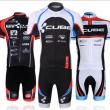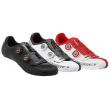As one of the world's largest manufacturers of bicycles, Giant long absent in the niche "Aero" road bikes. Since this type of bike is just beginning to experience a sunrise Jaintias seemed all the while taking a wait. Their first steps in this direction became apparent in 2012, when the company unveiled a radical new type of model to Propel Eurobike show (though the bike was imprisoned in a glass box, without the possibility to touch him, not to mention a test drive). Production frameset not easily Giant was given to designers. During his design was created more than 80 iterations of the design, as well as a large number of prototypes for test drive and analysis in a wind tunnel. Finally, a prototype of a bicycle in early 2013 was created a working sample which has traveled a pro-tour team Belkin. During the test period at Giant Propel had to modify the shape of the profile of the frame tubes, brake and integrated cable management system that finally allowed Giant in late 2013 to begin mass production of the bike.

FRAME
To date, the production of aero road bikes, there are a few ideas on how to achieve the right balance of aerodynamics, weight and stiffness. Some use a truncated airfoil design, the so-called "tail Kamma." This frame is in general looks like a traditional road and gives almost the same stiffness. Also, use a much flatter airfoil typically provides better aerodynamics, but which tends not to be as rigid as compared to driving with a conventional circular tube. Jaintias crowed uses a combination of both structural parts of the frame tube to achieve, as the Giant, the title of the fastest aero road bike on the planet. This statement is based on the more expensive and advanced model Propel Advanced SL, which is different from the frame type to be used Advanced carbon fiber and the fact that using the integrated seatpost with solid driving and removal.
Note also that all frames Propel series are universal for use - either mechanical cables or electrical wires.
In search of reducing air resistance the most unique feature of the design is the integration of Propel brakes. The front brakes are located behind the built forks, and rear at a normal place for them. Straight claw brakes V-type support smooth lines of the frame and fork. Adjusting the tension of a rope to center made through 2.5mm hex. It may be noted the ease of adjusting the brakes especially in comparison with an alternative view of the installation of an integrated brake, such as on a Trek Madone.
EQUIPMENT
Jaintias Giant Propel offers three trim levels: on the Shimano 105, Shimano Ultegra drivetrain and electronic Ultegra Di2, it is with the latter was our test bike. New Shimano Ultegra Di2 is impressive in appearance and function, using almost all innovations with the flagship Dura-Ace Di2. Even though the new Ultegra Di2 has the ability to install the internal battery, Giant decided to mount it externally, which is unfortunate progress in terms of maintaining the aerodynamic profile of the bike. Except saddle Fizik Arione, the remaining components were firm Jaintias bike, including wheels with 50mm profile P-SLR1 (OEM production DT Swiss), carbon handlebar and stem. Note that the high-wheel steering and a flat profile, further effectively emphasize the overall aerodynamics of the bike. The weight of the test bike - 7.8 kg (M size).


VERDICT
The yield on the Giant aero-highway market not only brings a new bike with a bright appearance, but also the best achievements in technology that we have seen in this genre until now. We note in particular the integrated brake design that does not sacrifice functionality in the name of aerodynamics, as well as the design of the frame, which helped achieve tremendous rigidity for this type of bike. Of course there are small flaws on which Giant certainly will work in newer versions Propel, in particular try to slightly reduce the weight of the bike. An excellent choice for those looking for a high-speed car on a cutting steps or a versatile and fast bike triathlon.


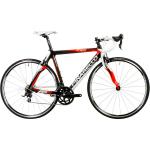 There is a misconception that according to our "killed" roads it is not realistic to drive a road bike and it makes no sense that if we get into a pair of holes we are guaranteed to receive an eight on the wheel, and in the worst case, its frame will crack. Indeed, looking at ..
There is a misconception that according to our "killed" roads it is not realistic to drive a road bike and it makes no sense that if we get into a pair of holes we are guaranteed to receive an eight on the wheel, and in the worst case, its frame will crack. Indeed, looking at .. 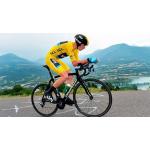 Hardly anyone would believe that their sports performance can be significantly improved, almost nothing to do without, but only care about efficiency. And after all in vain, as it is an extremely easy way to exercise that does not cause fatigue and terrible pain in all the muscles. It should ..
Hardly anyone would believe that their sports performance can be significantly improved, almost nothing to do without, but only care about efficiency. And after all in vain, as it is an extremely easy way to exercise that does not cause fatigue and terrible pain in all the muscles. It should .. 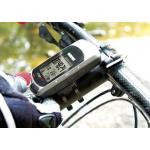 Nowadays, technical devices have penetrated into all spheres of our life and accompany each almost around the clock.
Bike computers appeared quite a long time, but, to date, it became really affordable and feature-rich gadgets which should be in the arsenal of every cyclist.
..
Nowadays, technical devices have penetrated into all spheres of our life and accompany each almost around the clock.
Bike computers appeared quite a long time, but, to date, it became really affordable and feature-rich gadgets which should be in the arsenal of every cyclist.
.. 
